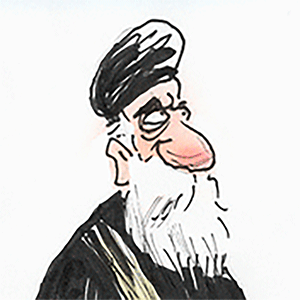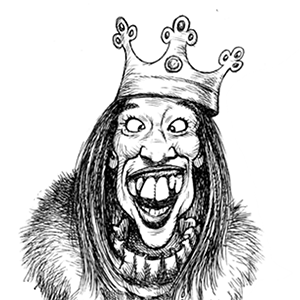Rick Steves’ Europe: Châteaux day trips from Paris are a royal treat
I always feel like a king when I get to explore the splendid châteaux near Paris. A highlight of one memorable trip was climbing under centuries-old exposed timbers through the attic of Vaux-le-Vicomte before popping out on the rooftop to a view of the spectacular garden.
There are several sumptuous palaces studding the region around Paris. The most famous of these is Versailles, but Vaux-le-Vicomte, Fontainebleau, and Chantilly also make for worthy day trips.
Most of these châteaux were lavish hunting lodges – getaways from the big city. Insanely extravagant, they were primarily built by kings or bankers and financiers from the courts of those kings. These 17th-century equivalents of today’s hedge-fund managers controlled the workings of the economy and amassed almost unfathomable wealth – which they spent in style.
Versailles is the grandest of these châteaux. Built in the town of Versailles southwest of Paris, about 30 minutes by RER train, it became the residence of the king and the seat of France’s government for a hundred years. Louis XIV moved to Versailles from the royal residence in Paris (today's Louvre).
The palace houses Louis' bedroom, a dazzling 700-seat royal opera house, a magnificent throne room with a 10-foot-tall canopied throne, and a royal make-out room in which couples would cavort beneath a ceiling painting of Venus, the goddess of love. In the magnificent 250-foot-long Hall of Mirrors, 17 arched mirrors match the 17 floor-to-ceiling windows providing views to the royal garden. Later, this was the room in which the Treaty of Versailles was signed, ending World War I.
Louis’ pride and joy was a landscaped wonderland dotted with statues and fountains behind the palace. He loved his gardens and threw his biggest parties here. At the far end of the gardens – a good 40-minute walk from the palace – the pastoral Trianon/Domaine area features a fantasy world of palaces and pleasure gardens, providing Louis and his successors with an escape from their escape.
Versailles may be the most historically significant, but Vaux-le-Vicomte, just an hour away by car, is flat-out ravishing, with a harmony of architecture, interior decor, and garden design that's unrivaled. It gets my vote for the most beautiful château in all of France.
Vaux-le-Vicomte was the home of Nicolas Fouquet, France’s finance minister during the reign of Louis XIV. After attending Fouquet’s château-warming party in 1661, a very young Louis XIV was impressed yet envious. To demonstrate his appreciation, Louis had Fouquet thrown in prison, hired his architect, artist, and landscape designer, and had them build Versailles. The atmosphere of the party is re-created on Saturday evenings in summer, when thousands of candles illuminate the palace while classical music plays in the background.
Compared to Versailles, Vaux-le-Vicomte feels more intimate and, in some ways, more impressive. Driving up to it, you roll down a peaceful road lined with plane trees, which locals claim were planted by Napoleon so that his armies would have good shade to march under on their long treks across Europe. Vaux-le-Vicomte's sculpted French garden was cutting-edge for its time and later would be copied in palaces all over Europe. And the palace is better furnished than Versailles, despite the fact that most of the paintings and furniture are not original (Louis confiscated what he liked for his own pad).
While Vaux-le-Vicomte and Versailles are French-designed, the Château of Fontainebleau – about an hour outside of Paris – was created by Italians. But it lacks Versailles' unity. Originally built in 1528, Fontainebleau features a gangly and confusing series of wings that has grown with centuries of kings. Walking its halls, you can easily track the artistic shift in style, from Renaissance to ornate Rococo to the more sober, postrevolutionary Neoclassical.
As exhibited in its Napoleon I Museum, Fontainebleau has numerous connections to the French emperor. It was here that the pope met Napoleon before the general’s 1804 coronation. And it was from the château’s famous horseshoe-shaped staircase that Napoleon gave his stirring abdication speech, trading his rule of France for exile to Elba in 1814.
About a 30-minute drive north of Paris, the extravagant hunting palace of Chantilly floats serenely on a reflecting pond. Though it doesn't have the well-preserved and grandiose interiors of other châteaux, Chantilly is notable for its impressive art.
After being destroyed during the French Revolution, the châteaux was rebuilt in 1882 by Henri d’Orléans. He later filled it with a fabulous art collection featuring 800 paintings, including works by Raphael, Titian, and Delacroix. His book collection, consisting of more than 15,000 titles, fills the château’s library.
Whether your interest is art, gardens, or pure, over-the-top opulence, a trip to Paris isn't complete without a dip into the countryside to visit the region's grand châteaux.
========
(Rick Steves (www.ricksteves.com) writes European guidebooks, hosts travel shows on public TV and radio, and organizes European tours. This column revisits some of Rick's favorite places over the past two decades. You can email Rick at rick@ricksteves.com and follow his blog on Facebook.)
©2024 Rick Steves. Distributed by Tribune Content Agency, LLC.
(c)2024 RICK STEVES DISTRIBUTED BY TRIBUNE MEDIA SERVICES, INC.














Comments